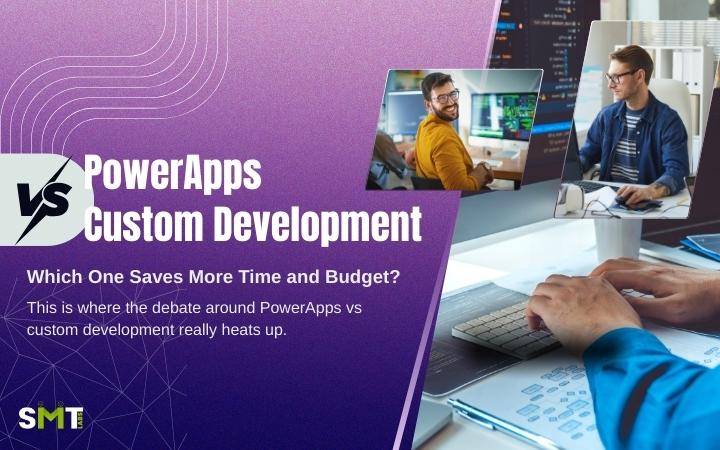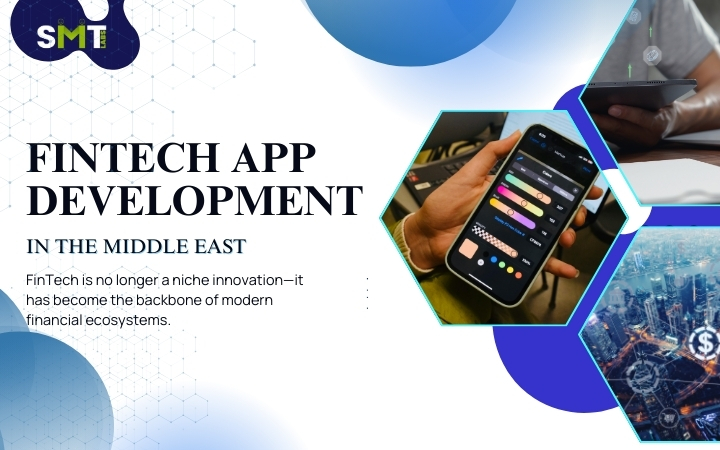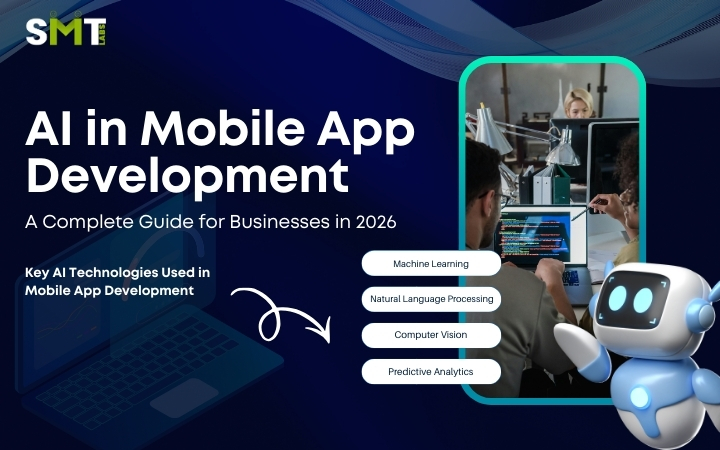FinTech App Development: Essential Features of FinTech Apps

What is FinTech?
FinTech, short for Financial Technology, refers to the innovative use of technology to deliver financial services in a faster, more efficient, and user-friendly manner. From mobile banking and peer-to-peer payment platforms to investment management and cryptocurrency trading apps, FinTech is reshaping how we interact with money. It blends the traditional financial industry with modern digital innovations, offering users unparalleled convenience and control over their financial lives. Whether it's paying bills, taking out a loan, or investing in stocks, FinTech apps are designed to be a one-stop solution for all financial needs.
At its core, FinTech simplifies complex financial processes and makes them more accessible. It's not just about convenience—it’s about empowering users. Think of how Uber changed taxis or how Netflix transformed TV—FinTech is doing the same for banking and finance.
The Rise of FinTech Applications
Over the past decade, FinTech apps have exploded in popularity. With smartphone penetration at an all-time high and users demanding instant solutions, financial institutions had no choice but to innovate or fall behind. According to recent reports, the global FinTech market is expected to reach trillions in value, with mobile-based financial solutions leading the charge.
This meteoric rise is fueled by the increasing trust in digital platforms and the decline of traditional bank usage. Millennials and Gen Z users, who expect speed and convenience, have particularly driven the adoption of FinTech apps. Whether it’s managing personal finance, investing in stocks, or transferring money abroad—there's a FinTech app for everything.
Notably, this growth isn’t limited to developed nations. In emerging economies, FinTech is helping bridge the financial inclusion gap, offering services to the unbanked and underbanked through mobile-first solutions. It’s not just a trend—it’s a transformation.
Why FinTech Apps Are Changing the Game
Traditional Banking vs FinTech
Gone are the days when you needed to physically visit a bank to open an account or deposit a check. Traditional banking, with its long queues and bureaucracy, is slowly giving way to the efficiency of FinTech apps. These digital platforms have reinvented the financial landscape, focusing on user needs and eliminating unnecessary red tape.
While traditional banks are still significant players, FinTech companies have a major advantage—they're built on technology. This makes them more agile, customer-focused, and capable of rapid innovation. They don't operate on legacy systems; instead, they leverage the cloud, APIs, and machine learning to deliver a better user experience.
Another key difference lies in accessibility. While banks operate during fixed hours and often require physical presence, FinTech apps are available 24/7, right in your pocket. They empower users to make real-time financial decisions without middlemen.
Benefits of Using FinTech Apps
FinTech apps offer a slew of benefits that make them irresistible to today’s digital-savvy users:
- Convenience: Access all financial tools from one app—no paperwork, no queues.
- Speed: Transactions, loan approvals, and investments happen instantly.
- Lower Costs: Reduced fees and charges compared to traditional services.
- Personalization: AI-driven insights tailor financial advice to user needs.
- Security: Modern encryption and biometric authentication ensure data protection.
Beyond these practical benefits, FinTech apps also promote financial literacy. With intuitive dashboards and educational tools, users can better understand their spending habits, plan budgets, and invest smarter. It’s not just about providing services—it’s about enabling smarter financial behavior.
FinTech apps also adapt quickly to user feedback, pushing regular updates and rolling out new features based on what users actually want. This kind of responsiveness is something traditional banking often struggles to achieve.
Core Elements of a Successful FinTech App
User-Centric Design
User experience (UX) can make or break a FinTech app. No matter how powerful the backend is, if the interface is clunky, slow, or confusing, users will bounce. A successful FinTech app focuses on intuitive design that guides users effortlessly from one function to another.
Good FinTech design is minimalist, purposeful, and inclusive. It simplifies complex financial data into digestible, actionable insights. The colors, icons, typography, and layout are all chosen to inspire trust and encourage interaction. A well-designed app makes financial tasks—like checking account balances or tracking spending—feel seamless and even enjoyable.
Furthermore, accessibility is key. Your app should cater to people with disabilities, different levels of tech literacy, and a variety of devices. Features like voice commands, adjustable text sizes, and high-contrast themes can make a world of difference.
Regulatory Compliance and Security
FinTech apps deal with sensitive user data and monetary transactions, making regulatory compliance and security non-negotiable. Failing to comply with financial regulations can lead to massive fines, loss of reputation, or even being banned from operating.
Depending on the region, your FinTech app must comply with frameworks like GDPR (EU), CCPA (California), PCI-DSS (for payment data), and more. This means transparent user policies, proper data handling, and consent-based data sharing.
Security-wise, you need military-grade encryption, regular security audits, and secure code practices. Two-factor authentication (2FA), biometric login, and real-time fraud detection are must-haves.
Building trust is everything in the financial world. If users feel their money or data is at risk, they’ll abandon your app in a heartbeat. So, compliance and security should be baked into every phase of development—not just added as an afterthought.
Essential Features of FinTech Apps
Secure Authentication and Authorization
Security is the cornerstone of any FinTech app. When money is involved, users expect airtight protection. That’s why secure authentication and authorization mechanisms are non-negotiable. Multi-factor authentication (MFA), biometric logins like fingerprint or facial recognition, and secure password policies are now standard expectations in modern financial applications.
Authentication confirms the user’s identity, while authorization ensures they’re permitted to access specific resources. This layered approach is crucial to prevent unauthorized access, phishing, and data breaches. Most top-tier FinTech apps integrate OAuth 2.0 protocols, JSON Web Tokens (JWT), and secure APIs for backend communication. These technologies help prevent session hijacking, data interception, and credential stuffing attacks.
Beyond the tech, it’s about user trust. Every login attempt, password reset, or suspicious activity should be communicated to users in real-time. Building transparent security mechanisms not only enhances protection but also reassures users that their financial data is in safe hands.
Real-Time Notifications and Alerts
Instant updates are one of the most-loved features of FinTech apps. Whether it’s a deposit, withdrawal, bill reminder, or suspicious activity—real-time notifications keep users informed and in control. These alerts provide immediate transparency and help reduce anxiety around financial transactions.
Push notifications, SMS alerts, and email reminders are commonly used formats. They’re not just about convenience—they’re essential for fraud prevention. If a user receives an alert about a transaction they didn’t make, they can immediately lock their account or report the issue.
From a design perspective, smart notification settings let users customize what they want to be alerted about—daily balance reports, investment gains, upcoming bills, etc. Done right, alerts improve engagement, retention, and user satisfaction. Just make sure they’re not overwhelming—balance is key.
Seamless User Experience (UX/UI)
A clean, intuitive, and consistent user experience is what separates a great FinTech app from a forgettable one. UX/UI isn’t just about aesthetics—it’s about making complex financial operations feel easy, even enjoyable. When a user logs into your app, they should immediately know where to go, what to do, and how to do it.
Your interface should have a logical flow, fast-loading screens, and a minimalist design that keeps distractions at bay. Use familiar icons, smooth transitions, and consistent color schemes to build user trust. Don’t forget to optimize for both light and dark modes—many users prefer to switch depending on the time of day.
Also, onboarding matters. A helpful tutorial, smart tooltips, and contextual assistance can make a huge difference for new users. When users feel guided and supported, they’re far more likely to stay engaged and loyal.
Budgeting and Financial Planning Tools
Today’s users want more than just transaction capabilities—they want insights. Budgeting and financial planning tools turn a simple FinTech app into a powerful personal finance companion. These tools help users categorize expenses, set savings goals, track income, and understand their financial habits better.
Smart charts, spending analysis, and predictive modeling powered by AI can help users make informed financial decisions. For example, if a user consistently overspends in a category, the app can offer suggestions to cut back. Some apps even allow envelope-style budgeting or gamify savings goals to make finance management more engaging.
By helping users take control of their money, your app becomes an essential daily tool, not just a utility. And the more value you provide, the less likely users are to switch to a competitor.
Integration with Bank Accounts and APIs
No FinTech app is an island. For it to offer true value, it must integrate seamlessly with users’ existing financial ecosystems. This means enabling connections to multiple bank accounts, credit cards, and even third-party financial tools through APIs (Application Programming Interfaces).
Open Banking APIs allow users to access all their financial data in one place, even if they have accounts at different institutions. This enables features like unified dashboards, consolidated transaction histories, and smarter financial analytics. It also allows FinTech apps to offer services like credit scoring, loan offers, and insurance—all personalized based on real financial data.
APIs are the lifeline of innovation in FinTech. They make the app more dynamic, flexible, and scalable. Just ensure you work with secure, compliant APIs that follow the latest standards like PSD2 in the EU or Open Banking frameworks elsewhere.
AI-Powered Chatbots and Customer Support
In the world of FinTech, customer expectations are sky-high. They want fast, accurate, and friendly support—24/7. That’s where AI-powered chatbots come into play. These intelligent assistants can answer FAQs, guide users through transactions, troubleshoot common issues, and even recommend personalized financial products—all without human intervention.
Chatbots reduce operational costs significantly while enhancing user satisfaction. Modern chatbots use natural language processing (NLP) to understand user queries in real time and offer human-like interactions. They can escalate complex queries to human agents when needed, ensuring that the user always feels heard and supported.
The best part? These bots learn and evolve. With machine learning algorithms, they analyze past conversations to improve future responses. In-app customer support, whether AI-driven or hybrid, is not just a luxury anymore—it’s a competitive necessity.
Transaction History and Analytics
Users want transparency, and nothing offers that more than a detailed transaction history paired with smart analytics. This feature helps users monitor their spending, track income, identify patterns, and ultimately make better financial decisions.
A great transaction history feature includes filtering options by date, category, amount, and merchant. Add to that visual analytics—pie charts, bar graphs, trends over time—and you’ve got a powerful tool. Some apps even offer real-time categorization and tagging to make sorting through transactions a breeze.
Advanced features include spending forecasts, month-end summaries, and alerts for irregular activities. These insights not only keep users engaged but also help build a stronger relationship between them and your app.
Advanced Features for Competitive Edge
Biometric Verification
In a mobile-first world, users expect fast and secure access—and biometric verification delivers just that. By leveraging fingerprint scanning, facial recognition, and even voice authentication, FinTech apps offer a seamless login experience while boosting security.
Biometric data is much harder to replicate or steal compared to passwords or PINs. It’s also faster—just a quick face scan and you're in. As a bonus, biometric logins reduce friction, especially for users who check their accounts frequently.
This added layer of protection builds trust, especially among users who are wary about digital finance. But it’s important to ensure compliance with privacy laws, as biometric data is highly sensitive. Always encrypt and securely store this data to stay on the right side of regulation.
Cryptocurrency Integration
As digital assets gain traction, integrating cryptocurrency functionalities is becoming a major value-add for FinTech apps. From simple crypto wallets to full-fledged trading platforms, users are increasingly expecting support for Bitcoin, Ethereum, and altcoins.
Crypto integration can include features like:
- Buying and selling cryptocurrencies
- Viewing real-time market data
- Transferring crypto assets
- Earning rewards through staking or DeFi integrations
The crypto audience is tech-savvy and fast-growing, so including this functionality can significantly broaden your user base. However, it also brings challenges—volatility, regulatory scrutiny, and complex user education. So if you’re adding this feature, do it right with airtight security, educational resources, and user-friendly interfaces.
Robo-Advisory and Investment Tools
Investing is no longer just for the wealthy. Thanks to FinTech, anyone can start with just a few bucks. Robo-advisors—AI-driven investment managers—offer automated, algorithm-based portfolio management tailored to a user’s financial goals, risk tolerance, and time horizon.
This democratization of investing is one of FinTech’s biggest triumphs. These tools help users invest smartly without needing a financial advisor. They analyze user data, suggest asset allocations, and rebalance portfolios—all automatically.
Other investment tools include stock trading platforms, ETFs, real estate investment portals, and retirement planning calculators. These features turn a basic FinTech app into a comprehensive financial hub, deepening user engagement and loyalty.
Multi-Currency Support
In an increasingly globalized world, many users earn, spend, and invest in multiple currencies. Whether it's a freelancer being paid in USD, a tourist tracking expenses in EUR, or an investor trading in JPY, multi-currency support is vital.
This feature allows users to hold, send, and convert currencies within the app. Some advanced apps also offer real-time exchange rates, historical data, and fee transparency. The goal is to make international transactions as seamless as domestic ones.
Supporting multiple currencies expands your app’s reach across regions and opens up new user demographics. But ensure your FX rates are competitive and your UI clearly communicates conversion fees and limits to avoid user frustration.
Machine Learning for Fraud Detection
Fraud is a top concern in digital finance—and rightly so. Users want to know their money is safe. This is where machine learning (ML) steps in as a game-changer. ML algorithms can analyze thousands of data points in real-time to detect suspicious activities and prevent fraud.
For example, if a user suddenly logs in from a new country or makes an unusually large purchase, the system can flag it, pause the transaction, and alert the user. Over time, these algorithms become more accurate, learning from previous behaviors and adjusting risk models accordingly.
By implementing real-time fraud detection powered by ML, you not only protect your users but also build long-term trust. Security and peace of mind are priceless assets in FinTech.
Monetization Strategies for FinTech Apps
Subscription Models
One of the most straightforward ways to generate revenue in FinTech is through subscription-based models. Users pay a recurring fee—monthly or annually—to access premium features such as advanced analytics, financial coaching, or higher transaction limits.
This model works particularly well when the app delivers consistent, tangible value. For example, if your budgeting tool helps users save $100 a month, they’ll gladly pay $10 for it. Subscriptions also create predictable revenue streams, which is essential for long-term business planning.
Freemium strategies, where core functionalities are free but users can upgrade for more features, work great in FinTech. Offer users a taste of the value and let them unlock more when they’re ready to level up their financial game.
Freemium and In-App Purchases
Many FinTech apps successfully leverage a freemium model combined with in-app purchases. The app itself is free to download and use for basic features, while additional functionality—such as detailed reports, custom alerts, or access to exclusive investment products—is available for purchase.
This strategy boosts user acquisition while still allowing revenue generation from power users who want more control and features. You can also monetize through partnerships—think insurance providers, loan companies, or investment platforms—earning a commission when users take action through your app.
In-app purchases should be relevant and valuable. Avoid paywalls on essential features and focus on enhancing the user experience instead of restricting it.
Best Practices for FinTech App Development
Agile Development Methodology
The FinTech landscape evolves rapidly, so your development process needs to be flexible. That’s where Agile methodology shines. Agile promotes iterative development, where feedback is integrated continuously, and updates are rolled out in small, manageable chunks.
Instead of spending a year building an app only to find out it's not what users want, Agile allows you to test features early, pivot quickly, and stay aligned with market needs. It’s a game-changer for time-to-market and user satisfaction.
Scrum, Kanban, and SAFe are popular Agile frameworks that can help your team stay productive, efficient, and adaptive. Continuous integration and deployment (CI/CD) pipelines are also essential for rapid release cycles and real-time updates.
Ensuring Scalability and Performance
A FinTech app might start with a few thousand users, but it should be built to scale to millions. That means building infrastructure that’s cloud-native, elastic, and optimized for high concurrency.
Load balancing, microservices architecture, and horizontal scaling can help you handle traffic spikes without a hitch. On the performance side, every millisecond matters—nobody likes waiting for a transaction to go through. Use caching, efficient queries, and lightweight front-end frameworks to keep things snappy.
Remember, poor performance leads to poor reviews—and in the app store world, that’s death. Fast, stable, and scalable apps retain users and attract new ones effortlessly.
Common Challenges in FinTech App Development
Data Privacy and Compliance
Handling financial data comes with massive responsibility. Every region has its own laws—GDPR in Europe, CCPA in California, and countless others worldwide. Non-compliance can result in hefty fines and irreparable damage to your brand.
To stay compliant, your app must have clear data policies, obtain explicit user consent, allow data deletion upon request, and maintain audit trails. Also, end-to-end encryption, secure APIs, and encrypted databases are critical.
Use anonymization and tokenization techniques to protect sensitive user data. And most importantly, bake privacy into your design from the get-go. Compliance isn’t a one-time check—it’s a continuous process that evolves with laws and tech.
Managing Real-Time Transactions
Real-time financial transactions require precision, speed, and reliability. Any delay or error can lead to loss of funds, trust, and reputation. FinTech apps must ensure that transactions are processed instantly and accurately, with appropriate fail-safes and rollback mechanisms.
You’ll need robust backend systems, redundant servers, and clear error-handling protocols. Payment gateways, APIs, and third-party integrations should be tested thoroughly under high-load conditions.
Downtime is not an option in FinTech. Even a few seconds of disruption can cost thousands. Use real-time monitoring tools, logging systems, and alert mechanisms to detect and fix issues before users even notice.
Future Trends in FinTech App Development
Open Banking and API-First Design
Open Banking is a movement toward transparent, user-consented data sharing between financial institutions via APIs. It’s revolutionizing how FinTech apps access and use customer data, opening up endless possibilities for personalization and innovation.
By designing with an API-first approach, your app becomes more modular, scalable, and integration-friendly. It can easily plug into third-party services, expand features, and adapt to future changes without a complete overhaul.
Countries like the UK and Australia are leading the charge with regulated Open Banking frameworks. If you want to stay competitive, embracing this trend is a must—not a maybe.
DeFi and Blockchain Integration
Decentralized Finance (DeFi) is poised to redefine how financial services are delivered. Built on blockchain technology, DeFi apps offer lending, borrowing, trading, and investing without intermediaries—cutting costs and improving access.
Also Read : Blockchain Development Services: Shaping the Future of Technology
FinTech apps are beginning to integrate DeFi features, such as connecting to decentralized exchanges (DEXs), offering crypto loans, or supporting staking pools. Blockchain also enhances transparency and reduces fraud thanks to its immutable ledger system.
But DeFi is still the Wild West—regulations are unclear, and security risks are high. Still, early adopters stand to gain significantly as the ecosystem matures.
Conclusion
FinTech apps are not just tools—they’re transforming the entire financial landscape. With the right mix of user-centric design, rock-solid security, smart features, and a forward-looking approach, you can build a FinTech app that stands out in a crowded market. Whether you’re developing a simple budgeting tool or an all-in-one digital bank, the focus should always be on creating real value for the user.
By integrating essential and advanced features like real-time analytics, AI-powered support, and seamless banking integrations, your app can become a daily companion for millions. Stay updated with trends, prioritize scalability and performance, and don’t cut corners on compliance.
The future of finance is digital, and with the right strategy, your FinTech app can lead the charge.





 INDIA
INDIA  USA
USA  SOUTH AFRICA
SOUTH AFRICA  MAURITIUS
MAURITIUS